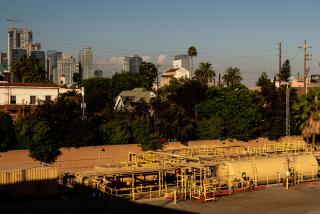City Hopes to Work Out Dredging Costs With Ventura Keys Residents
- Share via
VENTURA — No longer able to charge the residents of Ventura Keys to dredge the canals weaving through their properties, city officials say they want to “bury the hatchet” and start a mediation process.
The process, to be considered by the City Council on Monday night, would attempt to put aside years of bitter tort litigation and instead focus on how much future dredging will cost and who will pay for it.
The passage of Proposition 218 in November effectively prevents the city from levying maintenance assessments against constituents unless they agree, by a majority vote, to pay. At the recommendation of City Atty. Bob Boehm, the city is poised to abandon levying an annual assessment on Key residents, known as the Porto Bello Maintenance District.
“The rules have changed, and it is anticipated that the majority of property owners within the Porto Bello Maintenance District would reject an additional levy at this time,” Boehm wrote in a report to council members. “Future dredging operations will be limited to funds on hand . . . how do we wish to proceed?”
With new, cheaper dredging options available, city staff members are optimistic something can be worked out.
But after years of cantankerous fighting and lawsuits against the city, some Keys owners are so fed up, they say they refuse to pay another cent.
“This is a recreational area for everyone in the city. Why should we pay more than anyone else in the city?” asked Keys resident Paul Masi, arguing that maintenance of the approximately two miles of waterways is public service no different than public pools, schools or city streets.
Others say they might be willing to work toward compromise if the city would pay property owners back for the dredging cost they were forced to bear last time.
“Compromise might be possible if there were a forgiveness of the botched dredging in 1993,” said Nick Starr, another resident. “It was incompetent, permits were improperly obtained, there was lots of sand. . . .and I don’t feel we should have had to pay that inflated cost.”
*
But he said there is no need for the city to collect any more money from property owners--it should work with the $1.4 million it already has stockpiled.
Richard Parsons, the former general manager of the Ventura Port District who is now serving as the city’s dredging program manager, says that if the city obtains permits to dump the sand in the surf, dredging could cost as little as $760,000.
The last Keys dredging--when the city was forced to pipe the silt upland to a nearby dumping site--cost more than $3 million.
The assessment district was formed in 1991 to provide for ongoing dredging of the Keys waterways and repair of the waterways’ rocky man-made banks. The district levies an annual assessment to fund dredging over a seven-year cycle. Property owners along the waterways pay 75% of the cost; the city pays 25%.
Many residents felt from the beginning that the situation was unfair.
“This could have been resolved years ago, by agreeing to a reasonable and fair assessment,” said Councilman Jim Monahan, who said he agreed with the residents about the assessment district. “The residents were not opposed to paying something.”
Monahan said residents at Oxnard Harbor pay about $500 annually for dredging. Most Keys residents pay $1,000 to $2,000 annually.
*
As of June 30, 1997, the Porto Bello Maintenance Assessment future dredging fund had $1.4 million.
The waterways were last dredged in 1992. The next dredging is scheduled to begin in late 1998.
Parsons is working with city officials to cut costs. One way is to cooperate with the Port District and the Army Corps of Engineers--who dredge other sections of the Ventura Harbor--to share some costs.
Another is to obtain permits that would allow the city to take the sand scraped from the Keys waterways and dump it somewhere else where it is needed--like the mouth of the Santa Clara River.
Once the city hears from regulatory agencies, it will draft a work plan and begin discussions with Keys residents.
Steve Chase, assistant to the city manager, said he expects that to happen by fall.
“Once we get that, then we will sit down with the property owners and attempt to work out some mediation,” Chase said. “But until we get that draft plan there’s not much to talk about.”
More to Read
Sign up for Essential California
The most important California stories and recommendations in your inbox every morning.
You may occasionally receive promotional content from the Los Angeles Times.










